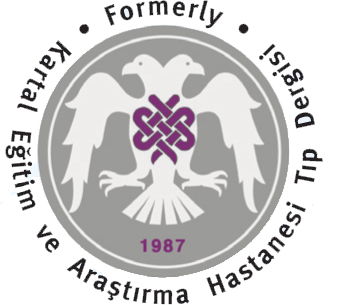Volume: 9 Issue: 3 - 1998
| RESEARCH ARTICLE | |
| 1. | THE HEPATIT A SEROPOSITIVITY AMONG THE CHILDREN BETWEEN 2 - 14 YEARS OLD Orhan Cura, Gülnur Tokuç, Yasemin Akın Ekmekçioğlu, Serdar Özer, Ayça Vitrinel Pages 699 - 701 Hepatitis A infection is responsible for many of the viral hepatitis cases. In this prospective study, the rate of hepatitis A seropositivity among children applied to the hospital has been researched and it's been tried to put out the factors leading to the disease. For this reason, anti HAV-IgG was searched in a total of 388 children between 2-14 years old and it's found positive in 159 cases (40 %). This positivity was determined 16 % in the 2-6 years group, 54 % in the 7-14 years group; 11 % in the children of well educated mothers, 67 % in the children of low and non-educated mothers; 6 % in the healthy families and 64 % in economically poor families. As a result, antiHAV-IgG positivity rates have been determined significantly high among the 7-14 years old children of non educated mothers and in the families who have a lower socio economical state and using the city waternet for drink. |
| 2. | ABLATIO PLACENTA: THE RESULTS OF MATERNAL AND PERINATAL ANALYSIS OF NORMOTENSIVE AND HYPERTENSIVE PATIENTS Erdal Eskiçırak, Karsel Ertekin, Serap Yaltı, Vedat Dayıcıoğlu Pages 702 - 705 120 patients who were operated with the diagnosis of plasental abruption between January/I/1997 and January/1/1998 at Zeynep Kamil Women and Children's Hospital Obstetric Clinic consisted the study group. Cases were sub grouped as hypertensive or normotensive. In our hospital the number of deliveries was 20341 and the number of ceaserian sections was 3558 (%77.49). 821 patients were hospitalized for preeclampsia. %25 of the patients (n=30) with plasental abruption were hypertensive. % 40 of the cases (n=12) with hypertention has grade-III plasental abruption, ie plasental abruption resulting in fetal death, this rate was % 19 (n=17) in the normotensive group. The difference was found to be statically significant. % 15 of the neonates born to hypertensive mothers died in the early neonatal period. Perinatal mortality was % 50 (n=15) in the hypertensive group and %31.1 (n=28) in the normotensive group. The difference between the two groups was statically significant. In the hypertensive group, the rate of term neonates was low % 3.33 (n=l) whereas the rate of small for gestational age neonates was significantly high compared to those of the normotensive group. The 1st and 5th minute Apgar scores were not significantly different. In %15 (n=18) of 120 cases there was a history of vaginal bleeding in the first trimestr. Placental abruption is an important cause of perinatal mortality. In hypertensive cases in whom the uteroplacental perfusion is affected the mortality increases. Hypertension may be both a predisposing factor and the cause of placental abruption. |
| CASE REPORT | |
| 3. | AN INSULINOMA CASE Gürsel Yıldız, Birsel Kavaklı, Mahmut Gümüş, H Fehmi Küçük, Taflan Salepçi, Mehmet Sargin, Ali Yayla Pages 706 - 709 Insulinoma, is a neuroendocrine tumor of pancreas, characterized by hypoglycemia related with excessive insulin secretion and its origin is the beta cells of pancreas. Classical Whipple triad (blood glucose level below 40 mg/dl, symptoms and signs of hypoglisemia which were lost after glucose infusion) can be detected in most of the patients. In this case, the patient who admitted our clinic with Whipple triad symptoms was examined, after clinical and laboratory examinations, determined as insulinoma. intraoperative biopsy was taken during the operation and the result was insulinoma. Because of it is a rare syndrome, we checked scientific literature and confirmed our decision. |



















